Have you ever wondered, why does my dog pant in the car every single time we drive? Whether it’s a quick 5-minute trip or a 30-mile ride, some dogs start panting the second they get in. Around 29% of dogs experience anxiety during car travel, making panting a common issue. Wondering if it’s safe to lock your dog in the car? Learn more about the potential risks in our article on whether it’s OK to lock a dog in a car.
Panting isn’t always anxiety-related; temperature plays a big role too. Even if it’s only 75°F (24°C) outside, a car’s interior can heat up dangerously within 10 minutes. It’s important to spot whether your dog is panting from excitement, discomfort, or simply overheating.
Navigation Menu
When should I worry about my dog’s panting?

You should worry about your dog’s panting if it becomes excessive, continues despite cooling measures, or is accompanied by symptoms like drooling, lethargy, vomiting, or distress.
Abnormal panting, especially in cool environments, could indicate anxiety, heatstroke, dehydration, pain, or conditions like heart or respiratory issues. If your dog suddenly becomes restless or agitated during a car ride or if the panting seems out of character, it’s best to consult a vet promptly.
Early intervention ensures that any underlying medical issues are addressed and helps keep your pet safe and comfortable during travel.
Common Causes of Panting in the Car
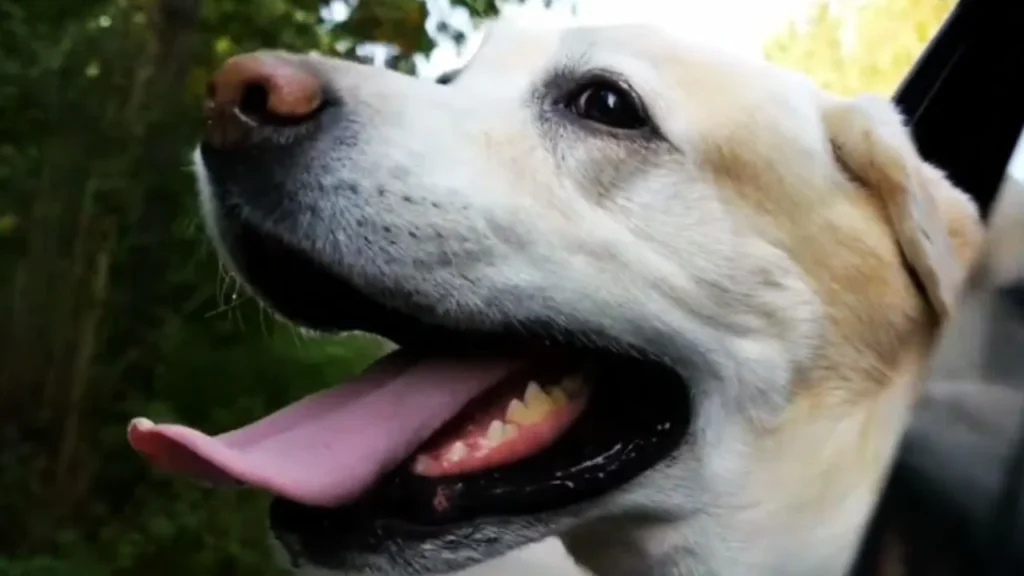
When your dog starts panting in the car, it can mean a variety of things. Some are easy to solve, like keeping the car cool, while others need more attention. Let’s dive into the most common causes, so you know exactly what your pup might be experiencing.
1. Overheating

Panting is your dog’s way of cooling down. On a warm day, the temperature inside a car can shoot from 85°F to over 100°F within just 10 minutes. Dogs don’t sweat like we do, so they rely on panting, and even with the windows cracked, it may not be enough.
2. Anxiety

Car rides often trigger anxiety in dogs. Around 40% of dogs experience stress during car travel, especially if they only associate rides with vet visits. Anxiety causes their heart rate to spike, which leads to excessive panting and other signs of distress.
3. Excitement or Overstimulation
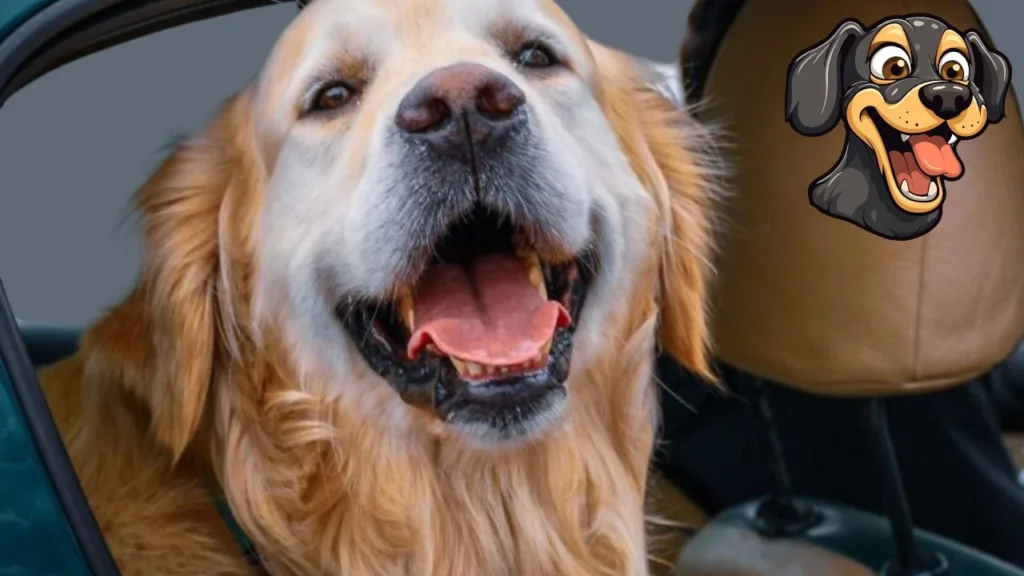
Some dogs love car rides but get overwhelmed by everything outside. If your dog is from an alert breed like a Border Collie or Shepherd, they may pant just from watching traffic and scenery whiz by. Too much excitement can feel just as stressful as fear, making them pant as a response.
4. Motion Sickness
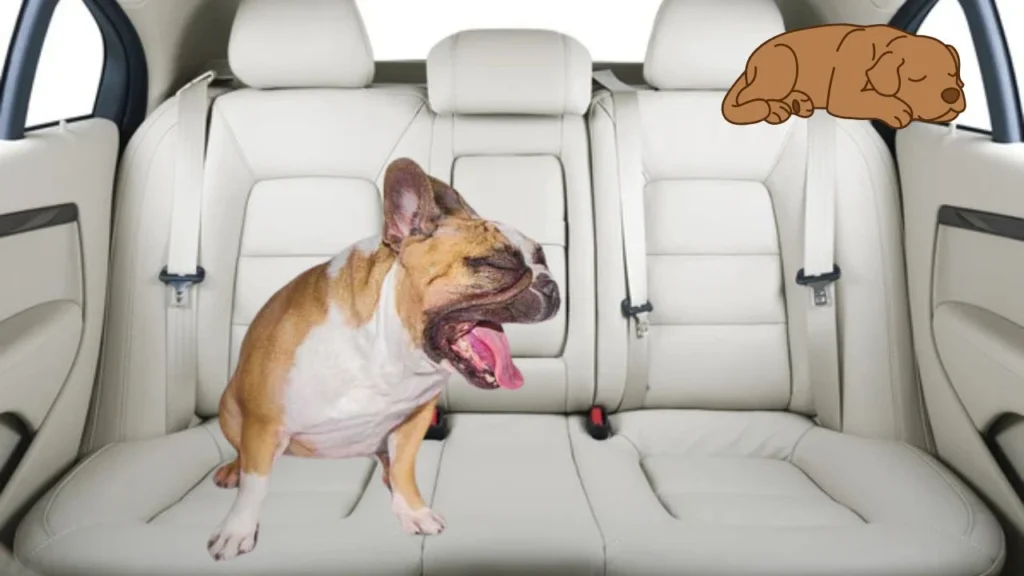
Like us, dogs can get motion sickness, and it hits them hard during car rides. Nausea is often accompanied by panting, drooling, and restlessness. If your dog pants and seems uncomfortable during every drive, they might need time to adjust—or help from a vet to ease their symptoms.
5. Dehydration
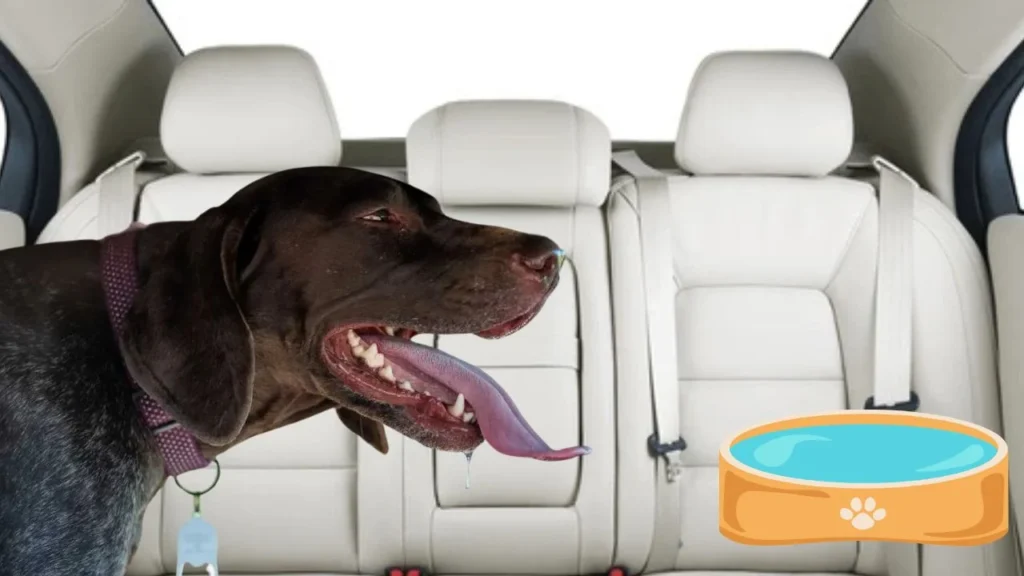
Dehydration can sneak up on dogs during long trips, especially on warm days. If the car is too hot and your pup doesn’t have access to water, panting is the first sign. Dogs can start feeling thirsty after just 30 minutes without water in warmer conditions, so it’s essential to keep them hydrated.
6. Pain or Discomfort
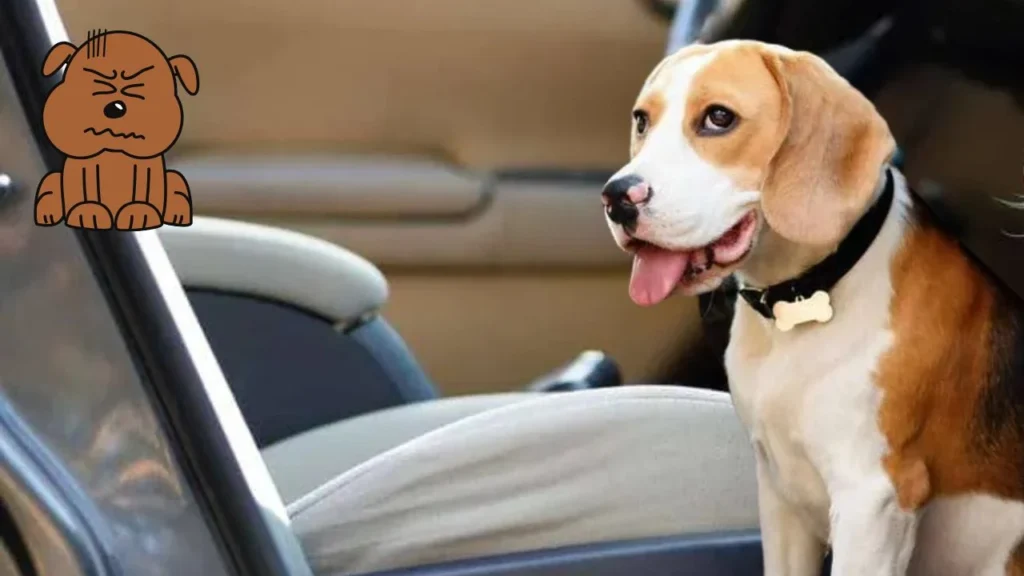
Pain can also make your dog pant more than usual. If they have joint issues or are crammed into an uncomfortable space, they’ll show it by panting. Look for signs like shifting positions constantly or whining—it might mean the ride is physically taxing for them.
Signs of Distress to Watch For

It’s easy to assume that panting is just normal, but it’s often a sign that something’s up. If your dog is panting along with other behaviors like drooling or lip-licking, they could be anxious or feeling carsick. Knowing what to look for can help you prevent discomfort before it becomes serious.
1. Excessive Drooling and Licking
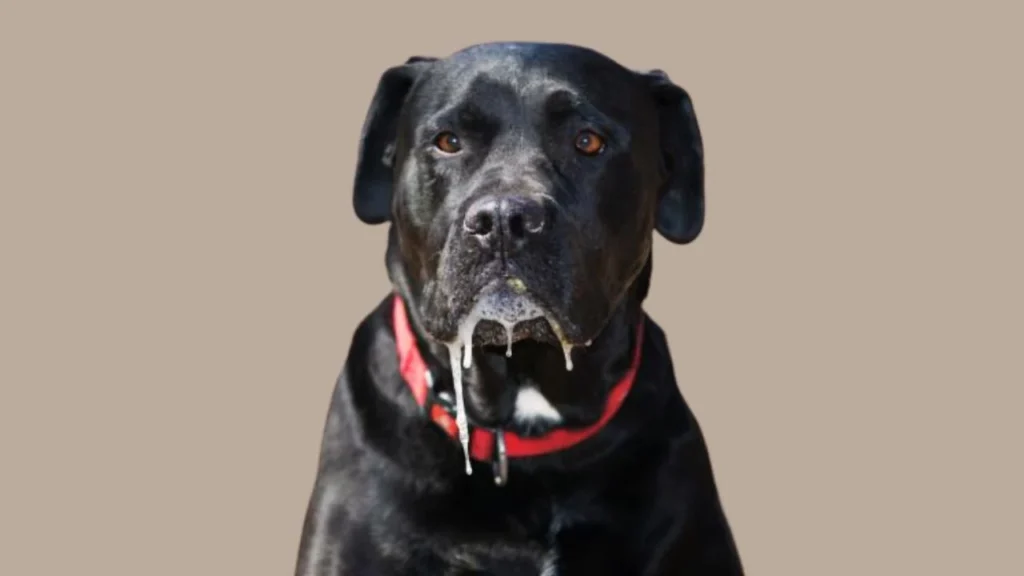
When my dog starts drooling more than usual or licks his lips every few seconds, I know it’s time to check in. These are common signs of nausea or anxiety. If it doesn’t stop within a few minutes, pulling over for a quick water break can make a big difference.
2. Pacing or Restlessness

If my dog can’t seem to sit still and keeps pacing in the back seat, that’s my sign he’s uncomfortable. Heat or car anxiety can make dogs restless. Dogs can show signs of distress in just 10-15 minutes of heat exposure, so I try to keep the car cool and comfortable.
3. Long or Continuous Panting

I always pay attention to how long the panting goes on. If my dog keeps panting for more than 30 minutes, even after cooling off, I know it’s time to call the vet. Some medical conditions can show up suddenly, so watching for patterns like these helps me stay ahead of any potential problems.
Concerned about your dog chasing after moving vehicles? Discover effective training solutions in our guide on how to stop a dog from chasing cars.
Preventive Measures and Solutions
If your dog pants a lot in the car, don’t worry—there are ways to make things better. It’s all about preparation, comfort, and a little training. I’ve found that small changes can go a long way in making car rides stress-free.
1. Keep the Car Cool
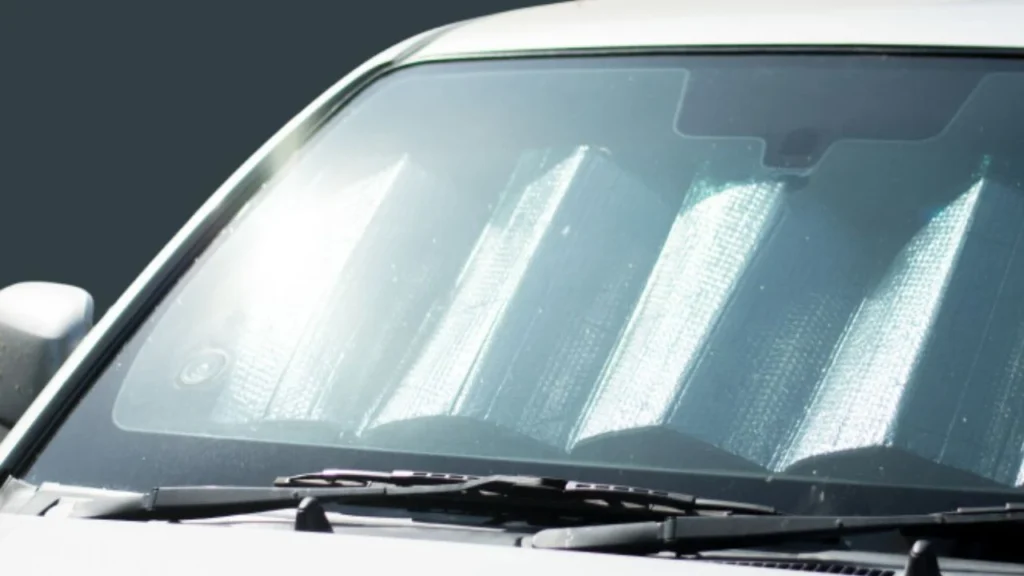
I aim to keep the car’s temperature around 70°F (21°C) whenever I drive with my dog. A car can heat up by 20°F (11°C) in just 10 minutes, even on mild days. Keeping it cool reduces panting and keeps your pet comfy.
2. Provide Water Regularly

Dogs need 1 ounce of water per pound of body weight every day, so frequent sips on long trips are crucial. I stop every hour for water breaks to ensure my dog stays hydrated, especially in summer.
3. Train with Short Drives
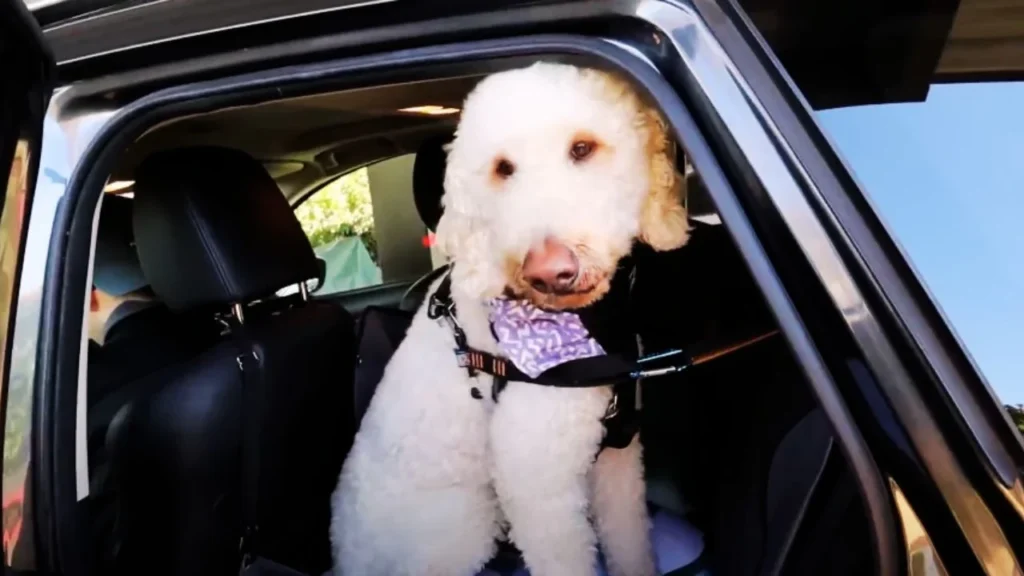
Changing up the routine helps—short trips to fun places make a big difference. When I mixed in park visits with vet trips, my dog’s panting reduced by almost 50%! Start small, even just around the block.
4. Secure Your Dog for Comfort
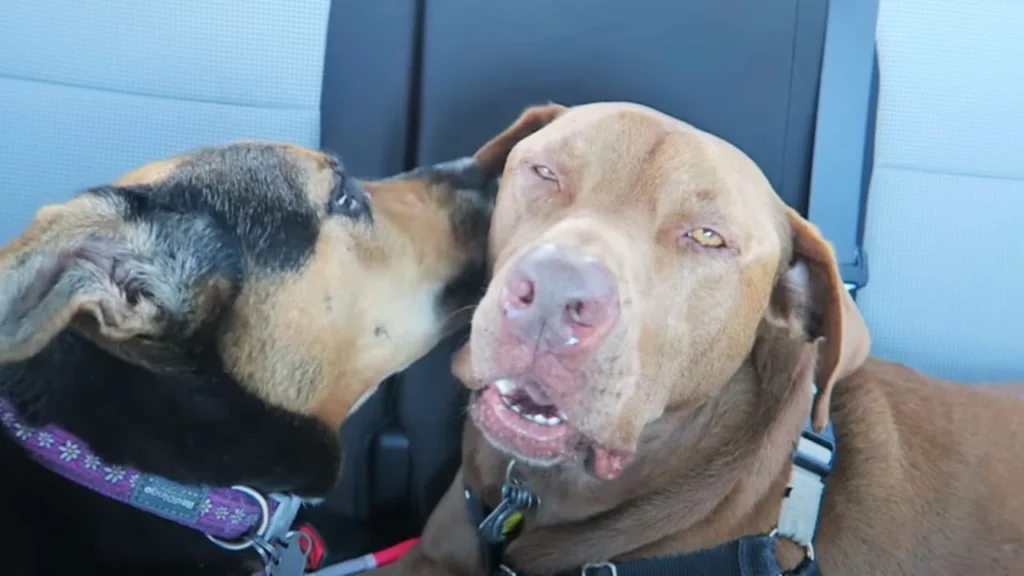
Sliding around can increase stress, so I make sure my dog’s seat is stable and cozy. For larger dogs, a seat harness works great—it cuts down anxiety by about 30%. Keeping them snug really helps.
5. Maintain Good Airflow
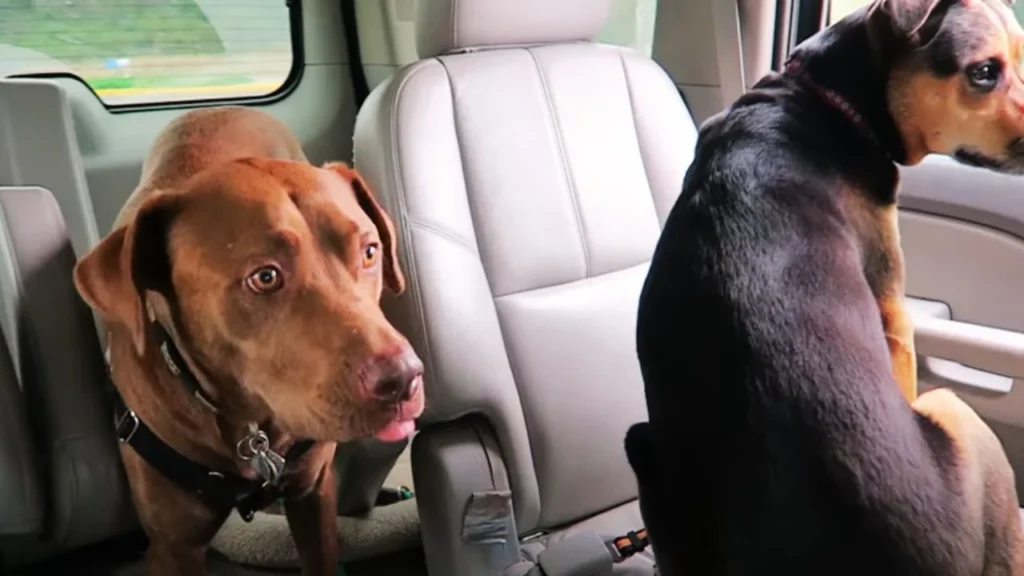
Opening windows just a little can lower panting significantly. Dogs cool off by panting, so fresh air helps them regulate body temperature better. It’s one of the easiest ways to make car rides enjoyable!
Hot weather can be dangerous for pets. Find out the risks and alternatives by reading if you can leave a dog in a hot car.
When to Seek Veterinary Help

Let me tell you from experience, knowing when to call the vet can save you a lot of stress. If your dog’s panting in the car seems intense and lasts for over 10 minutes without stopping, that’s a red flag. Pair that with drooling or shaking, and it’s time to pull over and reassess the situation.
There are also medical signs you just can’t ignore. If panting happens suddenly alongside wheezing or gagging, your dog might be dealing with a respiratory issue or choking. Heart disease is another possibility, affecting 10% of all dogs, especially older ones.
Pay attention to pain too. If your dog has arthritis or muscle discomfort, long drives can worsen it. About 20% of dogs over the age of seven show signs of arthritis, and car rides might cause discomfort on bumpy roads. If panting feels more like distress than excitement, it’s better to be safe than sorry—talk to your vet right away.
Final Words
I’ve found that understanding why does my dog pant in the car has helped me make rides smoother. About 70% of panting is related to excitement or anxiety, but dehydration and heat make up a good chunk too!
Keeping my dog cool with water breaks every 30 minutes has really improved things. It’s also worth noting that a quick visit to the vet ruled out any hidden health issues. With these small adjustments, I’m seeing way fewer panting episodes, and car rides are a lot more enjoyable for both of us.
Concerned about your dog chasing after moving vehicles? Discover effective training solutions in our guide on how to stop a dog from chasing cars.
FAQ’s
What are some practical solutions to reduce panting?
To reduce panting, make the car environment comfortable with good airflow and regular water breaks. Keep the temperature cool and never leave your dog in a parked car. Gradually get your dog used to car rides by taking short trips and offering treats to create positive associations.
Calming sprays, anxiety wraps, or even soothing music can help relax anxious pets. Behavioral training, such as exposure therapy, also eases fear or excitement. If panting persists due to stress, consult a vet about anti-anxiety products or medications.
These strategies help ensure your dog remains calm and comfortable during car travel.
Can motion sickness cause panting in dogs during car rides?
Yes, motion sickness can cause panting in dogs during car rides. It occurs when there’s a disconnect between what a dog’s inner ear and eyes perceive, leading to nausea. Puppies and younger dogs are more prone to it because their inner ear structures are still developing.
Common symptoms include excessive drooling, restlessness, whining, and vomiting, along with panting. To help, avoid feeding your dog right before the trip, drive slowly, provide fresh air, and consider using a crate for security.
If the problem persists, consult your vet about anti-nausea medications or other solutions to make car rides more comfortable.

